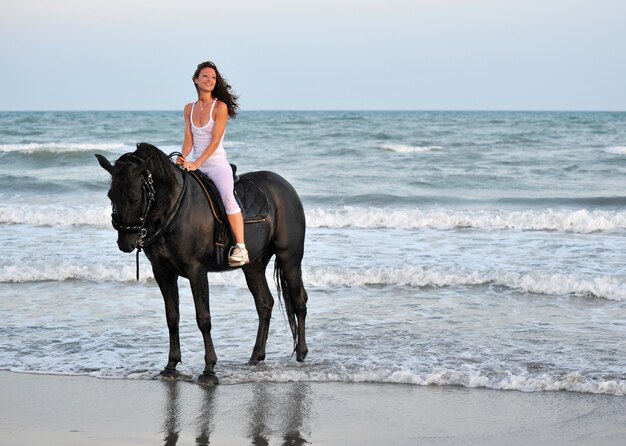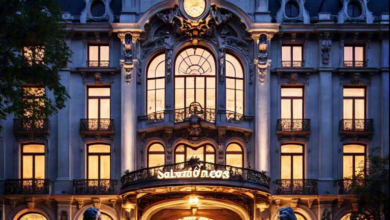Marinera con caballo de paso fondo blanco

Marinera con caballo de paso fondo blanco are two exquisite elements of Peruvian culture that beautifully intertwine to create a performance art like no other. Marinera, a traditional Peruvian dance, and the Caballo de Paso, a unique horse breed, come together to showcase the rich cultural heritage of Peru. This article explores the captivating world of Marinera with Caballo de Paso, delving into their history, significance, and the mesmerizing performances that bring them to life.
Understanding Marinera
What is Marinera?
Marinera is a traditional Peruvian dance known for its elegance, grace, and intricate footwork. Originating from the coastal regions of Peru, it is often performed as a couple’s dance that symbolizes a courtship between a man and a woman. The dance reflects the joy and playfulness of Peruvian culture and is a staple in celebrations and festivals throughout the country.
Historical Background
The roots of Marinera can be traced back to the Spanish colonial period when various dance forms from Europe mingled with local traditions. Over the centuries, Marinera evolved, absorbing influences from African, indigenous, and European cultures. Today, it stands as a symbol of national pride and cultural identity.
The Dance’s Evolution Over Time
Marinera has undergone several transformations since its inception. Originally known as “Zamacueca,” it was later renamed “Marinera” in honor of the Peruvian president, who was instrumental in its promotion. Modern Marinera continues to evolve, incorporating contemporary elements while retaining its traditional charm.
The Caballo de Paso
Characteristics of Caballo de Paso
The Caballo de Paso is a distinctive horse breed renowned for its smooth, natural gait known as the “Paso Llano.” This gait allows the horse to move with an effortless and graceful stride, making it an ideal companion for the Marinera dance. The breed is characterized by its elegant build, high stamina, and responsive nature.
Historical and Cultural Importance
The Caballo de Paso has deep roots in Peruvian history, dating back to the Spanish colonial era. Originally brought to Peru by Spanish conquistadors, the breed quickly adapted to the local environment and became an integral part of Peruvian ranching culture. Its role in Marinera further highlights its significance in Peruvian tradition.
The Breed’s Unique Features
What sets the Caballo de Paso apart is its distinctive gait, which is smooth and comfortable for both rider and onlookers. This gait, combined with the horse’s majestic appearance, makes it a perfect partner for the elegant Marinera dance.
The Marinera Dance and Its Connection to Caballo de Paso
How Marinera is Performed
Marinera is performed to lively music and involves a series of intricate steps, graceful movements, and playful interactions between partners. The dance is often characterized by its use of handkerchiefs, which are twirled and waved as part of the choreography.
Role of Caballo de Paso in Marinera
In performances that incorporate the Caballo de Paso, the horse and rider become part of the dance, adding an extra layer of grace and majesty. The horse’s smooth gait complements the dancer’s movements, creating a harmonious and visually stunning performance.
The Aesthetic Appeal of the Dance-Horse Combination
The combination of Marinera and Caballo de Paso is visually captivating. The elegance of the dance is amplified by the horse’s graceful movements, resulting in a performance that celebrates both human and animal artistry.
Performance Elements
Music and Rhythm in Marinera
The music accompanying Marinera is vibrant and rhythmic, often featuring traditional Peruvian instruments such as the cajón and guitar. The lively tunes enhance the dance’s dynamic movements and contribute to the overall festive atmosphere.
Costumes and Attire for Marinera
Traditional Marinera costumes are elaborate and colorful, reflecting the dance’s cultural heritage. Women typically wear flowing dresses adorned with intricate embroidery, while men don traditional shirts, pants, and wide-brimmed hats.
Training and Skills Required for Both Dancer and Horse
Performing Marinera with a Caballo de Paso requires extensive training for both the dancer and the horse. Dancers must master complex footwork and timing, while horses need to be trained to perform their unique gait in sync with the dance.
Significance of the Dance in Peruvian Culture
Marinera as a National Dance
Marinera is celebrated as Peru’s national dance, embodying the country’s rich cultural traditions. It is performed at various festivals, including the Marinera Festival in Trujillo, where dancers from across Peru come together to showcase their skills Marinera con caballo de paso fondo blanco.
Celebrations and Festivals Featuring Marinera and Caballo de Paso
Festivals featuring Marinera and Caballo de Paso are vibrant events that draw large crowds. These celebrations highlight the importance of these cultural elements and provide a platform for showcasing traditional performances.
Impact on Local Communities
The Marinera dance and Caballo de Paso play a significant role in local communities, fostering a sense of pride and unity. They also contribute to the preservation of Peruvian cultural heritage by engaging younger generations in traditional practices.

International Recognition and Influence
Marinera and Caballo de Paso on the Global Stage
Both Marinera and Caballo de Paso have gained international recognition, with performances being showcased at cultural events around the world. Their global presence helps to promote Peruvian culture and foster cross-cultural understanding.
Influences and Adaptations in Other Cultures
The elegance of Marinera and the unique charm of Caballo de Paso have inspired adaptations in various cultures. These influences highlight the universal appeal of the dance and the horse breed.
Preservation and Promotion Efforts
Efforts to preserve Marinera and Caballo de Paso include cultural exchanges, educational programs, and support from organizations dedicated to maintaining traditional practices. These initiatives ensure that future generations can continue to enjoy and celebrate these cultural treasures.
Challenges and Preservation
Current Challenges Facing Marinera and Caballo de Paso
Despite their cultural significance, Marinera and Caballo de Paso face challenges such as modernization and loss of traditional practices. These challenges threaten the preservation of these cultural elements and require concerted efforts to address Marinera con caballo de paso fondo blanco.
Efforts to Preserve Traditional Practices
Various organizations and community groups are working to preserve Marinera and Caballo de Paso by promoting traditional performances, supporting cultural education, and encouraging participation in festivals and events.
Future of Marinera and Caballo de Paso
The future of Marinera and Caballo de Paso depends on ongoing efforts to maintain their cultural relevance. By embracing both tradition and innovation, these elements can continue to thrive and inspire future generations.
Conclusion
In summary, Marinera and Caballo de Paso are integral parts of Peruvian cultural heritage, each bringing its own unique charm to the performance. Their harmonious combination showcases the elegance and richness of Peruvian traditions, making them a treasured aspect of the country’s identity. Preserving and promoting these cultural elements is essential to ensuring that future generations can continue to celebrate and appreciate their significance.
FAQs
What is the Marinera dance?
Marinera is a traditional Peruvian dance characterized by its graceful movements and lively music. It symbolizes courtship and is performed as a couple’s dance.
How is the Caballo de Paso different from other horse breeds?
The Caballo de Paso is known for its smooth, natural gait called “Paso Llano,” which provides a comfortable ride and adds elegance to performances.
Why is the Marinera dance important in Peruvian culture?
Marinera is considered Peru’s national dance and represents the country’s rich cultural heritage. It is performed at festivals and celebrations, reflecting Peruvian traditions and values.
What are the main elements of a Marinera performance?
Key elements of a Marinera performance include intricate footwork, graceful movements, lively music, and traditional costumes. In some performances, the Caballo de Paso is also incorporated, adding a unique dimension to the dance.
How can one learn more about Marinera and Caballo de Paso?
To learn more about Marinera and Caballo de Paso, consider attending cultural festivals, visiting Peruvian cultural centers, or engaging with local communities that practice and preserve these traditions.




